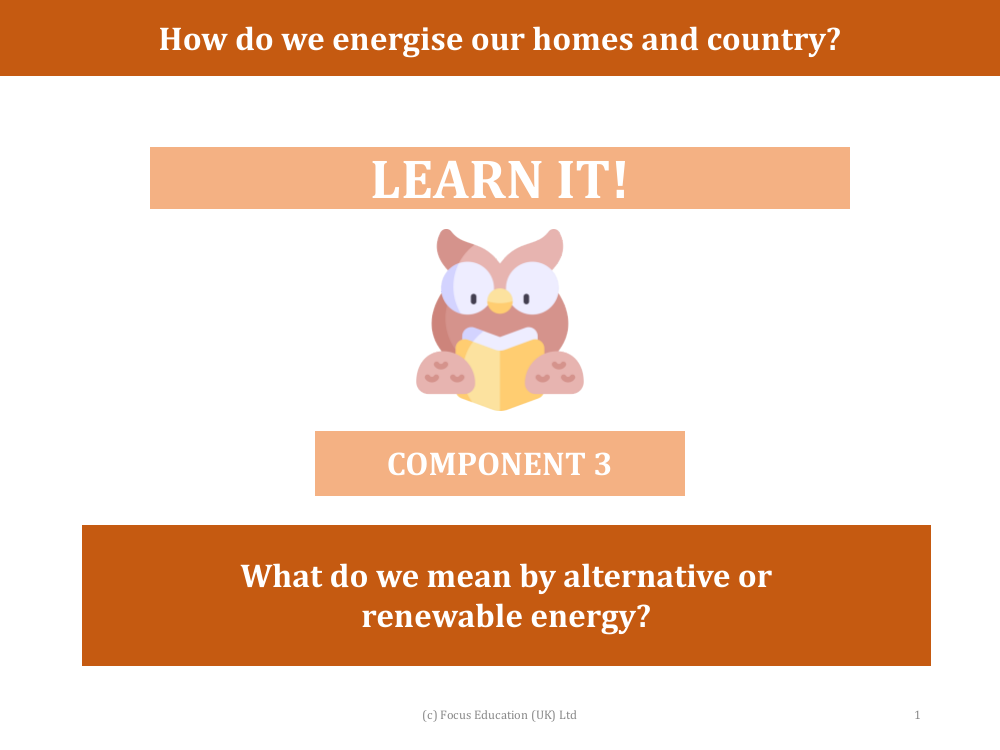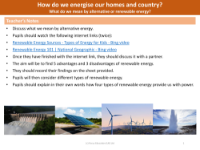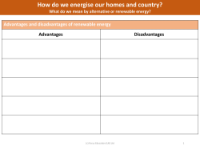What do we mean by alternative or renewable energy? - presentation

Geography Resource Description
Alternative or renewable energy refers to energy sources that are sustainable and can be replenished, in contrast to finite fossil fuels such as coal, oil, and gas. The lesson encourages students to explore the concept of renewable energy, prompting them to watch educational videos and engage in discussions to identify five advantages and three disadvantages of renewable energy. The aim is to increase students' understanding of how renewable energy sources like wind, hydro, and solar can be harnessed to produce electrical energy through turbines and generators. This knowledge is foundational in appreciating how we can energise our homes and country in an eco-friendly manner.
Students delve into different types of renewable energy and are tasked with explaining in their own words how these energy sources provide power. They learn about hydropower, which involves using the kinetic energy of moving water to drive turbines and generate electricity, and solar energy, where sunlight is converted into electricity using solar panels. The curriculum also covers wind energy, which relies on the movement of air to rotate turbines, and geothermal energy, which taps into the Earth's internal heat to produce steam that powers turbines. These renewable energy forms are crucial for moving towards a more sustainable and environmentally responsible future in energy production.



